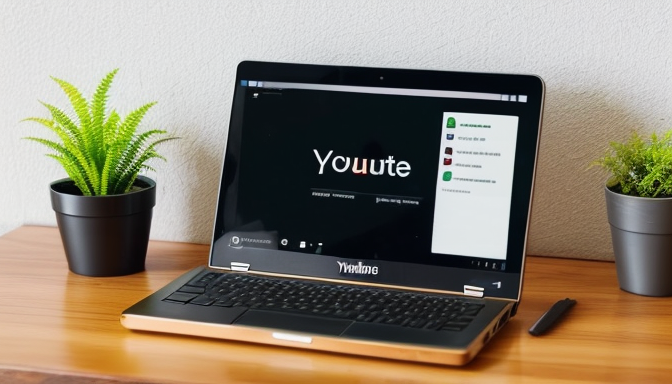
How to Download YouTube Videos in Laptop: Step-by-Step Instructions
This article provides comprehensive, step-by-step guidance on downloading YouTube videos to your laptop. It covers various methods, tools, and essential tips to ensure a seamless experience.
Before diving into the downloading process, it is crucial to understand YouTube’s Terms of Service. Engaging with the platform’s content should always respect copyright laws to avoid potential legal issues.
Downloading videos without permission can violate YouTube’s policies. Therefore, familiarize yourself with their copyright guidelines to ensure compliance and respect for content creators.
Selecting the appropriate software is essential for a smooth downloading experience. Below are some popular tools and their features:
- 4K Video Downloader: User-friendly interface with high-quality downloads.
- YTD Video Downloader: Supports various formats and batch downloads.
- Freemake Video Downloader: Offers extensive format options and is free to use.
This detailed guide will walk you through the downloading process:
- Copying the Video URL: Navigate to the YouTube video, click on the URL bar, and copy the link.
- Pasting the URL into the Software: Open your chosen downloader, paste the URL into the designated field.
- Selecting Video Quality and Format: Choose your preferred video quality and format from the available options.
Even with the best tools, issues can arise. Here are common problems and solutions:
- Dealing with Slow Download Speeds: Ensure you have a stable internet connection and close unnecessary applications.
- Handling Unsupported Formats: Use a video converter to change the format for compatibility with your devices.
Understanding the legal implications of downloading videos is vital. Familiarize yourself with copyright laws and the concept of fair use, especially for educational purposes.
In conclusion, downloading YouTube videos can be done safely and responsibly by following the guidelines provided. Always prioritize legal compliance and respect content creators’ rights to ensure a positive experience.
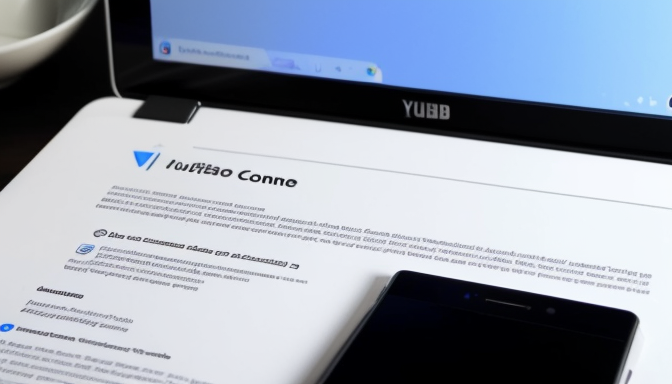
Understanding YouTube’s Terms of Service
Before diving into the process of downloading videos from YouTube, it is essential to grasp the platform’s terms of service and copyright policies. Understanding these guidelines not only helps you avoid potential legal issues but also ensures that you are in compliance with the rules set forth by YouTube.
YouTube’s terms of service explicitly state that users are not allowed to download content without permission, unless a download button or link is provided by the platform itself. This means that downloading videos directly from YouTube without authorization can lead to serious legal consequences, including account suspension or even legal action from content creators.
Furthermore, copyright laws protect the rights of content creators. When you download a video, you are essentially creating a copy of that content, which may infringe on the creator’s rights if done without permission. It is important to recognize that while some videos may appear to be free to access, they are still protected under copyright law.
To navigate these complexities, consider the following key points:
- Check for permissions: Always look for any indications that a video can be downloaded, such as a download button or explicit permission from the creator.
- Use videos responsibly: If you do download a video, ensure that it is for personal use and not for redistribution or commercial purposes.
- Understand fair use: Familiarize yourself with the concept of fair use, which may allow limited use of copyrighted material without permission under certain circumstances, such as for educational or commentary purposes.
In conclusion, being aware of YouTube’s terms of service and copyright policies is crucial for anyone considering downloading videos. By respecting these guidelines, you not only protect yourself legally but also honor the hard work of content creators.
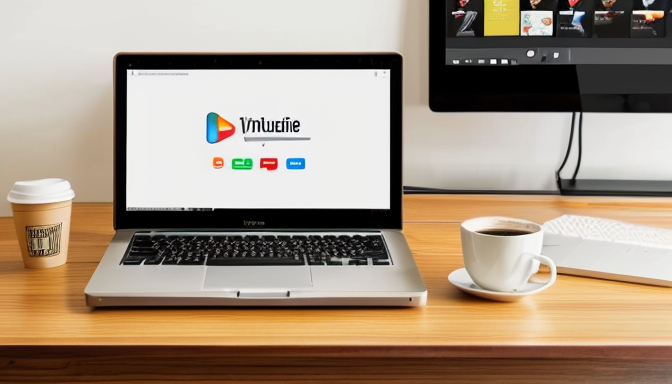
Choosing the Right Software for Downloading
Selecting the appropriate software is crucial for ensuring a smooth and efficient downloading experience. With numerous options available, it can be overwhelming to choose the right tool that meets your specific needs. This section will review some of the most popular downloading tools, highlighting their features, advantages, and limitations to help you make an informed decision.
When considering software for downloading YouTube videos, it’s important to evaluate both free and paid options. Free software can be appealing due to its cost, but it may come with limitations such as ads, slower download speeds, or fewer features. On the other hand, paid software often provides enhanced functionality, faster speeds, and customer support, making it a worthwhile investment for frequent users.
- Free Software Options:
- 4K Video Downloader: A popular choice for its user-friendly interface and ability to download entire playlists.
- YTD Video Downloader: Offers basic downloading features and supports various video formats.
- Paid Software Options:
- Internet Download Manager (IDM): Known for its high download speeds and advanced features such as resume capability.
- Allavsoft: Supports a wide range of sites and formats, allowing for batch downloads.
Each of these tools has its unique features. For instance, some may allow you to select the quality of the video before downloading, while others may offer additional functionalities like converting videos into different formats. It’s advisable to read user reviews and check compatibility with your operating system before making a choice.
In conclusion, the right software can significantly enhance your video downloading experience. By considering factors such as ease of use, features, and cost, you can select a tool that best fits your needs and ensures a seamless downloading process.
Free vs. Paid Software Options
This section delves into the key differences between free and paid software options for downloading YouTube videos. Understanding these differences is essential in making an informed decision that aligns with your specific needs and preferences.
Free Software Options
- Cost-effective: Free software is obviously a great choice for those on a budget. You can access basic functionalities without any financial commitment.
- Community Support: Many free tools have active communities that offer support and updates, which can be beneficial for troubleshooting.
- Limited Features: While free software can perform basic downloading tasks, it often lacks advanced features such as batch downloading or high-definition options.
- Ad-Supported: Some free tools may include ads or promotional content, which can detract from the user experience.
Paid Software Options
- Comprehensive Features: Paid software typically offers a wider range of features, such as multiple format support, higher download speeds, and advanced editing tools.
- Customer Support: With a purchase, you often receive dedicated customer support, which can be crucial if you encounter issues.
- No Ads: Paid versions usually provide an ad-free experience, allowing for seamless usage without distractions.
- Regular Updates: Paid software often receives regular updates and improvements, ensuring compatibility with the latest YouTube changes.
In conclusion, choosing between free and paid software ultimately depends on your specific needs and budget. If you require basic functionality and are willing to navigate potential limitations, free software may suffice. However, for users seeking a more robust and feature-rich experience, investing in paid software can prove beneficial in the long run.
Top Recommended Downloading Tools
In today’s digital age, having the right tools for downloading YouTube videos can significantly enhance your experience. Below, we present a selection of the most reliable and user-friendly downloading tools available, each with unique features and user experiences to help you make an informed decision.
| Tool Name | Key Features | User Experience |
|---|---|---|
| 4K Video Downloader |
|
Users appreciate its intuitive interface and fast download speeds, making it a popular choice among content creators. |
| YTD Video Downloader |
|
Many users find it reliable for downloading entire playlists, although some note occasional ad interruptions. |
| Freemake Video Downloader |
|
Users commend its versatility and ease of use, although the free version has some limitations. |
| ClipGrab |
|
Many users enjoy its user-friendly design and the ability to search for videos directly within the app. |
Each of these tools offers unique advantages, making them suitable for different user needs. When selecting a downloading tool, consider factors such as ease of use, download speed, and format options. This will ensure a seamless experience tailored to your preferences.
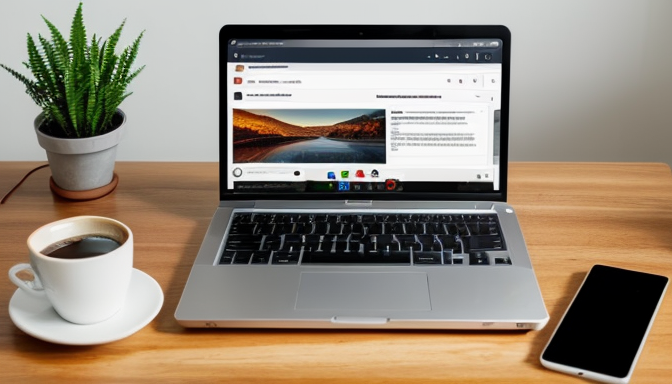
Step-by-Step Guide to Download YouTube Videos
This comprehensive guide will provide you with all the necessary steps to successfully download YouTube videos to your laptop. Whether you’re looking to save a tutorial for offline viewing or keep a favorite music video, this process is straightforward when you follow the right steps.
- Step 1: Copy the Video URL
Begin by navigating to the YouTube video you wish to download. Click on the address bar of your browser and copy the URL. Make sure the URL is complete, as even a minor error can prevent the download.
- Step 2: Choose Your Downloading Tool
Select a reliable software or website designed for downloading YouTube videos. Some popular options include 4K Video Downloader, YTD Video Downloader, and ClipGrab. Ensure that the tool you choose is compatible with your operating system.
- Step 3: Paste the URL
Open your chosen downloading tool and locate the option to paste the URL. Click on it and insert the URL you copied in Step 1. This action will prepare the software to retrieve the video.
- Step 4: Select Video Quality and Format
Before initiating the download, select your preferred video quality and format. Options usually range from 720p to 1080p or even higher, depending on the source video. Choose the format that best suits your device, such as MP4 for universal compatibility.
- Step 5: Download the Video
Once you’ve set your preferences, click the download button. The software will start downloading the video. This process may take a few moments depending on your internet speed and the file size.
- Step 6: Locate the Downloaded File
After the download is complete, navigate to the folder where your downloaded files are saved. You can usually find this in your Downloads folder unless you specified a different location.
By following these steps, you can easily download YouTube videos to your laptop for offline enjoyment. Remember to respect copyright laws and only download content for personal use unless you have permission from the content creator.
Copying the Video URL
When it comes to downloading videos from YouTube, one of the most crucial steps is learning how to properly copy the URL of the video you wish to download. This process may seem simple, but doing it correctly will ensure that you can proceed smoothly with the download. Below is a detailed guide on how to effectively copy the video URL.
- Navigate to YouTube: Open your web browser and go to the YouTube website. Use the search bar to find the video you want to download.
- Select the Video: Click on the video thumbnail to open the video player. Make sure the video is the one you intend to download.
- Copy the URL:
- If you are using a desktop or laptop, simply click on the address bar at the top of your browser. The URL should be highlighted automatically.
- Right-click on the highlighted URL and select Copy from the context menu. Alternatively, you can press Ctrl + C (or Command + C on Mac) to copy it.
- Mobile Devices: If you are using a mobile device, tap on the share icon (usually represented by an arrow) below the video. From the options that appear, select Copy Link.
Once you have copied the URL, you are ready to paste it into your chosen downloading software. Remember that the URL must be accurate; any mistakes could hinder the downloading process. By mastering this simple yet essential step, you set the foundation for a successful video download experience.
Pasting the URL into the Software
In this section, we will guide you through the process of pasting the copied URL into your chosen software, ensuring you achieve the best results possible. This step is crucial as it sets the foundation for the downloading process.
Once you have successfully copied the URL of the YouTube video you wish to download, the next step is to open your selected downloading software. Most software applications have a designated area for you to paste the URL, often labeled as “Paste URL,” “Enter Link,” or something similar.
- Locate the Input Field: Look for the input field where you can paste the URL. This is typically found on the main interface of the software.
- Paste the URL: Click on the input field and use the keyboard shortcut Ctrl + V (or Command + V on Mac) to paste the copied URL. Alternatively, you can right-click in the field and select “Paste” from the context menu.
- Check for Errors: After pasting, double-check the URL for any errors. Ensure that it starts with “https://” and is complete, as an incomplete or incorrect URL may lead to download failures.
After pasting the URL, you may need to adjust some specific settings in the software to optimize your download. Here are a few common settings to consider:
| Setting | Description |
|---|---|
| Video Quality | Select the desired resolution (e.g., 720p, 1080p) for your download. |
| File Format | Choose the format in which you want to save the video (e.g., MP4, AVI). |
| Destination Folder | Specify where on your laptop you want the downloaded video to be saved. |
Once you have pasted the URL and adjusted the necessary settings, you are ready to initiate the download. Click on the Download button to start the process. Depending on your internet speed and the size of the video, the download may take some time. Be patient and monitor the progress within the software.
By following these steps, you can effectively paste the URL into your software and prepare for a smooth downloading experience.
Selecting Video Quality and Format
is a vital step in enhancing your overall viewing experience. With the multitude of options available, it can be overwhelming to determine the best choice for your specific needs. In this section, we will explore the different video quality settings and formats, along with tips on how to make the right selection.
When it comes to video quality, you typically have several resolutions to choose from, including:
- 144p – Very low quality, suitable for slow internet connections.
- 360p – Low quality, better for mobile viewing.
- 480p – Standard definition, a good balance for most users.
- 720p – High definition, providing a clearer image.
- 1080p – Full HD, ideal for larger screens.
- 4K – Ultra HD, offering the best quality for compatible devices.
Each resolution serves different purposes. For instance, if you’re watching on a mobile device, lower resolutions like 360p or 480p might suffice. However, for a larger screen, you would want to opt for at least 720p or higher.
In addition to resolution, the video format is equally important. Common formats include:
- MP4 – Widely supported and offers good quality.
- AVI – High quality but larger file size.
- MKV – Supports multiple audio and subtitle tracks.
- WMV – Good for Windows users but may have compatibility issues.
To select the best video quality and format, consider the following:
- Device Compatibility: Ensure the format is supported by your playback device.
- Internet Speed: Higher quality requires faster internet; choose accordingly.
- Storage Space: Higher resolutions and certain formats can consume more storage.
By taking these factors into account, you can optimize your video downloading experience and enjoy content in the best possible quality.

Troubleshooting Common Download Issues
Downloading videos from YouTube can be a straightforward task, but even the most reliable tools can present challenges. This section aims to identify common issues that users encounter during the downloading process and provide effective solutions to overcome these obstacles.
- Slow Download Speeds: One of the most frequent complaints is slow download speeds. This can be caused by several factors, including network congestion or the server’s response time. To enhance your download speed, consider the following tips:
- Check your internet connection to ensure it’s stable.
- Try downloading during off-peak hours when fewer users are online.
- Close any unnecessary applications that may be consuming bandwidth.
- Unsupported Formats: After downloading, you may find that the video is in a format not compatible with your device. To resolve this issue, you can:
- Utilize video conversion software to change the format to one that is supported.
- Check the settings in your downloading software to ensure you select a compatible format before downloading.
- Incomplete Downloads: Sometimes, downloads may fail or be interrupted. To prevent this, make sure to:
- Use a reliable downloading tool that supports resume functionality.
- Ensure your device has sufficient storage space to accommodate the video file.
- Video Not Available: If you encounter a message stating that the video is not available for download, consider:
- Checking if the video has any restrictions set by the uploader.
- Trying a different downloading tool that may bypass certain restrictions.
By being aware of these common issues and implementing the suggested solutions, you can significantly improve your video downloading experience. Remember, troubleshooting is part of the process, and with the right approach, you can enjoy your favorite content without frustration.
Dealing with Slow Download Speeds
Experiencing slow download speeds can be incredibly frustrating, especially when you’re eager to access content quickly. Fortunately, there are several strategies you can implement to enhance your download speed and streamline the process. Below are some practical tips to help you achieve faster downloads:
- Check Your Internet Connection: Ensure that your internet connection is stable. Use a speed test tool to measure your current speed and compare it with what you are paying for. If your speed is significantly lower, consider rebooting your router or contacting your internet service provider.
- Use a Wired Connection: If you’re currently using Wi-Fi, try switching to a wired Ethernet connection. Wired connections tend to be more stable and faster than wireless connections, which can be affected by distance and interference.
- Limit Background Applications: Close any unnecessary applications running in the background that may be consuming bandwidth. This includes streaming services, cloud backups, or other downloads that could slow your connection.
- Choose Off-Peak Hours: Downloading during peak internet usage times can lead to slower speeds. Try downloading during off-peak hours, such as late at night or early in the morning, when fewer users are online.
- Optimize Your Download Settings: Some downloading software allows you to adjust settings that can improve speed. Look for options like multi-threading or resume support to enhance your download experience.
- Clear Browser Cache: If you’re downloading through a web browser, clearing your cache can improve performance. A cluttered cache can slow down browsing and downloading speeds.
- Update Your Software: Ensure that your downloading software and browser are up to date. Updates often include performance improvements and bug fixes that can enhance your downloading experience.
By implementing these tips, you can significantly improve your download speeds and enjoy a more efficient downloading process. Remember, patience and persistence are key when troubleshooting slow downloads.
Handling Unsupported Formats
When downloading videos from platforms like YouTube, you may encounter files in unsupported formats. This can be frustrating, especially if you want to watch the video on your preferred device. Fortunately, converting these formats is a straightforward process that can enhance your viewing experience.
First, it’s essential to identify the format of the downloaded video. Common unsupported formats include AVI, MKV, and WMV. To play these files on devices like smartphones, tablets, or certain media players, you might need to convert them into more compatible formats such as MP4 or MOV.
To convert unsupported formats, you can use various tools available online or download software specifically designed for video conversion. Here are some popular options:
- HandBrake: A free, open-source tool that supports a wide range of formats and offers customizable settings for video quality.
- Any Video Converter: This user-friendly software allows batch conversion and supports multiple formats, making it a great choice for beginners.
- Online Video Converter: A convenient web-based solution that enables quick conversions without the need to install software.
Once you have chosen a conversion tool, follow these general steps:
- Open the conversion software and upload the unsupported video file.
- Select the desired output format, such as MP4, from the list of available formats.
- Adjust any settings if necessary (e.g., resolution, bitrate) to optimize the video quality.
- Start the conversion process and wait for it to complete.
- Once finished, download the converted file to your device.
By following these steps, you can easily convert unsupported video formats and enjoy your downloaded content without any hassle. Always ensure that the conversion process respects copyright laws and the rights of content creators.

Legal Considerations When Downloading Videos
Understanding the legal implications of downloading videos is crucial for anyone looking to save content from platforms like YouTube. This section will delve into the various laws and regulations that govern video downloads, ensuring that you remain compliant and avoid potential legal issues.
When it comes to downloading videos, the most significant aspect to consider is copyright law. Copyright laws protect the rights of creators and prohibit the unauthorized reproduction or distribution of their work. In many jurisdictions, downloading a video without permission from the copyright holder can be considered a violation of these laws. Therefore, it’s essential to be aware of the specific regulations that apply in your region.
Additionally, many platforms, including YouTube, have their own terms of service that outline what users can and cannot do with the content available on their site. These terms often explicitly forbid downloading videos unless a download button is provided by the platform itself. Ignoring these terms can lead to account suspension or legal action.
Another important concept to understand is fair use. This legal doctrine allows for limited use of copyrighted material without permission under certain circumstances, such as for educational purposes, commentary, or criticism. However, the application of fair use can be complex and varies by case, so it’s essential to evaluate whether your intended use qualifies.
To stay within legal boundaries while downloading videos, consider the following guidelines:
- Always check the copyright status of the video.
- Review the terms of service of the platform.
- Understand the concept of fair use and how it applies to your situation.
- Seek permission from the copyright holder when in doubt.
In conclusion, being informed about the legal considerations surrounding video downloads is vital for staying within the law and respecting content creators’ rights. By following these guidelines, you can enjoy your downloaded content without the risk of legal repercussions.
Copyright Laws Explained
When it comes to downloading and sharing videos, understanding copyright laws is essential to navigate the complex landscape of digital content. Copyright laws are designed to protect the rights of creators, ensuring they receive credit and compensation for their work. This section will clarify what is permissible and what is not, helping you make informed decisions while engaging with online video content.
What is Copyright?
Copyright is a legal framework that grants creators exclusive rights to their original works, including videos, music, and literature. This means that the creator has the sole authority to reproduce, distribute, and display their work. Violating these rights can lead to legal consequences, including fines and the removal of content.
Downloading Videos: What You Need to Know
- Personal Use: Generally, downloading videos for personal use may not be illegal, but it often violates the terms of service of platforms like YouTube. Always check the specific rules of the platform.
- Sharing Videos: Sharing downloaded videos, especially for commercial purposes, is typically prohibited without permission from the copyright holder.
- Transformative Use: If you are using a video for commentary, criticism, or educational purposes, you might be able to argue that your use falls under “fair use.” However, this is a complex area of law and varies by jurisdiction.
Consequences of Copyright Infringement
Engaging in copyright infringement can lead to serious repercussions. These may include:
- Legal action from the copyright owner- Fines and penalties- Removal of content from platforms
Conclusion
In summary, understanding copyright laws is crucial when downloading and sharing videos. Always prioritize respecting the rights of content creators and familiarize yourself with the legal implications of your actions. By doing so, you can enjoy video content responsibly and avoid potential legal issues.
Fair Use and Its Implications
Understanding Fair Use in the Context of YouTube Video DownloadsThe concept of fair use plays a significant role when it comes to downloading content from platforms like YouTube. It is essential to grasp what fair use entails and how it can be applied, especially for those interested in using videos for educational or commentary purposes.
Fair use is a legal doctrine that allows for limited use of copyrighted material without requiring permission from the rights holders. This principle is particularly relevant in the context of YouTube videos, where content creators often share their work for public consumption. However, the application of fair use can be complex and varies depending on several factors.
- Purpose and Character of Use: The intent behind downloading the video is crucial. If the purpose is educational, transformative, or for commentary, it is more likely to be considered fair use. For instance, using a clip from a video to create a review or an analysis can fall under this category.
- Nature of the Copyrighted Work: The type of content being used also matters. Using factual or non-fictional content is generally more favorable for fair use than fictional works.
- Amount and Substantiality: The portion of the video used is another critical factor. Using a small excerpt may strengthen the fair use claim, while using a significant portion could weaken it.
- Effect on Market Value: If the use of the video negatively impacts the market for the original work, it may not be considered fair use. For example, if your downloaded video could replace the original in the market, this could pose legal issues.
In conclusion, while fair use can provide a framework for downloading YouTube videos, it is crucial to evaluate each situation carefully. Understanding these implications not only helps in complying with copyright laws but also respects the rights of content creators. Always consider seeking legal advice if you’re unsure about your specific use case.
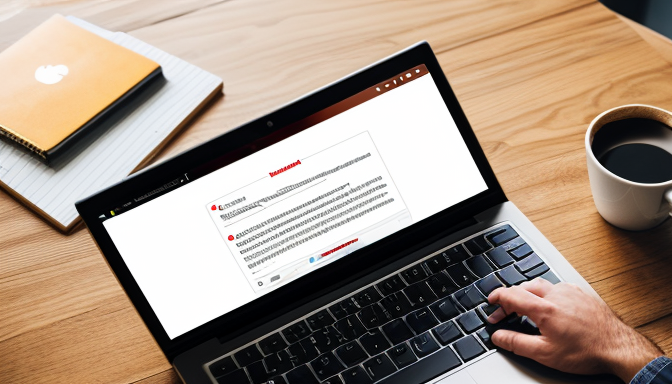
Conclusion: Safe and Responsible Downloading
In today’s digital age, the ability to download videos from platforms like YouTube has become increasingly popular. However, it is essential to approach this task with a clear understanding of the legal and ethical implications involved. By adhering to the guidelines outlined in this article, you can ensure that your downloading practices are both safe and responsible.
First and foremost, it is crucial to familiarize yourself with YouTube’s terms of service. These guidelines are designed to protect the rights of content creators and ensure that their work is not used without permission. Ignoring these terms can lead to potential legal repercussions, including copyright infringement claims.
When selecting software for downloading videos, consider tools that prioritize user privacy and legal compliance. There are numerous options available, both free and paid, but not all are created equal. Look for software that offers clear information on its compliance with copyright laws and provides features that respect content creators’ rights.
Moreover, always remember to prioritize fair use principles. If you plan to use downloaded content for educational or commentary purposes, understanding how fair use applies can help you navigate potential legal challenges. This principle allows for limited use of copyrighted material without permission, provided it meets certain criteria.
In conclusion, downloading YouTube videos can be a straightforward process if done correctly. By prioritizing legal compliance and showing respect for content creators, you can enjoy your favorite videos while supporting the community. Always stay informed about the latest guidelines and best practices to ensure a positive experience for yourself and others.
Frequently Asked Questions
- Is it legal to download YouTube videos?
Downloading YouTube videos can be a gray area. Generally, it’s against YouTube’s terms of service unless you have permission from the copyright holder or the video is in the public domain. Always check the copyright status before downloading!
- What software do I need to download YouTube videos?
You can use various software options to download YouTube videos. Some popular choices include 4K Video Downloader, YTD Video Downloader, and ClipGrab. Each has its own features, so choose one that fits your needs!
- Can I download videos in different formats?
Absolutely! Most downloading tools allow you to choose from various formats, such as MP4, AVI, or MKV. Just select your preferred format during the download process to ensure compatibility with your device.
- What should I do if my download is slow?
If you’re experiencing slow download speeds, try checking your internet connection, closing unnecessary applications, or using a different downloading tool. Sometimes, switching to a wired connection can also help boost speed!
- How can I convert unsupported video formats?
If you download a video in an unsupported format, you can use conversion software like HandBrake or online converters to change it to a compatible format. Just upload the video and select your desired output format!